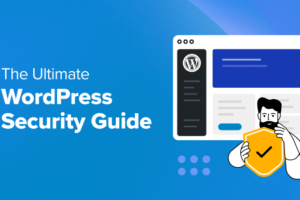
Search Engine Optimization (SEO)
Search Engine Optimization (SEO)
Search Engine Optimization (SEO) is the process of optimizing your website to rank higher in search engine results pages (SERPs) and attract more organic traffic. It’s a critical aspect of digital marketing that involves both on-page and off-page strategies. In this blog post, we’ll dive into three essential components of SEO: On-Page SEO Techniques, Off-Page SEO Strategies, and Keyword Research and Optimization.
1. On-Page SEO Techniques

On-page SEO refers to the optimization of individual web pages to rank higher and earn more relevant traffic in search engines. It involves both the content on the page and the HTML source code.
Key On-Page SEO Techniques:
a. Title Tags:
- The title tag is one of the most important on-page SEO elements. It tells search engines and users what the page is about.
- Best Practices: Include the primary keyword, keep it under 60 characters, and make it compelling to encourage clicks.
b. Meta Descriptions:
- Meta descriptions provide a brief summary of a page’s content in search engine results.
- Best Practices: Use a concise, engaging description (150-160 characters) with the primary keyword, and include a call-to-action (CTA) if possible.
c. Header Tags (H1, H2, H3):
- Header tags structure your content and make it easier for both users and search engines to read.
- Best Practices: Use the H1 tag for the main title and H2 or H3 for subheadings, incorporating relevant keywords naturally.
d. Content Quality:
- High-quality content is the backbone of on-page SEO. It should be informative, engaging, and relevant to the target audience.
- Best Practices: Create long-form content (1,500+ words) that thoroughly covers the topic, uses LSI (Latent Semantic Indexing) keywords, and is regularly updated.
e. Image Optimization:
- Images can enhance the user experience but must be optimized for search engines.
- Best Practices: Use descriptive filenames, compress images for faster loading times, and include alt text with relevant keywords.
f. Internal Linking:
- Internal links connect one page of your website to another, helping users navigate and allowing search engines to crawl your site more efficiently.
- Best Practices: Use relevant anchor text, link to high-authority pages, and avoid overloading pages with too many links.
g. URL Structure:
- The URL of a webpage is important for both SEO and user experience.
- Best Practices: Keep URLs short, descriptive, and include the primary keyword. Avoid using unnecessary parameters or characters.
h. Mobile Optimization:
- With the majority of users accessing websites via mobile devices, mobile optimization is crucial.
- Best Practices: Ensure your site is responsive, loads quickly, and is easy to navigate on smaller screens.
2. Off-Page SEO Strategies

Off-page SEO refers to all the activities you do outside your website to improve its rankings. It’s largely about building your website’s reputation and authority.
Key Off-Page SEO Strategies:
a. Link Building:
- Building high-quality backlinks from authoritative sites is one of the most effective off-page SEO strategies.
- Best Practices: Focus on earning backlinks from relevant, high-authority websites through guest blogging, influencer outreach, and content marketing.
b. Social Media Engagement:
- Social media platforms can amplify your content and drive traffic to your site.
- Best Practices: Share your content regularly on social media, engage with your audience, and participate in industry-specific discussions.
c. Influencer Marketing:
- Collaborating with influencers in your niche can boost your brand’s credibility and reach.
- Best Practices: Partner with influencers who align with your brand and have a genuine connection with their audience. Encourage them to share your content and link back to your site.
d. Guest Blogging:
- Writing guest posts for reputable blogs in your industry can help you gain visibility and backlinks.
- Best Practices: Contribute high-quality content to reputable sites, include a link back to your site, and engage with the readers in the comments.
e. Local SEO:
- For businesses targeting a local audience, optimizing for local search is crucial.
- Best Practices: Claim and optimize your Google My Business listing, get listed in local directories, and encourage satisfied customers to leave positive reviews.
f. Forum Participation:
- Participating in forums and online communities related to your niche can establish your authority and generate traffic.
- Best Practices: Provide valuable insights, link to your content when relevant, and avoid spamming.
g. Content Marketing:
- Creating and distributing valuable, relevant content is key to attracting and engaging your target audience.
- Best Practices: Develop a content calendar, focus on evergreen content, and promote your content across multiple channels.
3. Keyword Research and Optimization

Keyword research is the foundation of any successful SEO strategy. It involves identifying the search terms that your target audience is using and optimizing your content to rank for those keywords.
Key Steps in Keyword Research and Optimization:
a. Identifying Keywords:
- Start by brainstorming a list of potential keywords related to your business.
- Tools to Use: Google Keyword Planner, Ahrefs, SEMrush, and Ubersuggest can help you find relevant keywords, search volumes, and competition levels.
b. Analyzing Competitor Keywords:
- Analyze the keywords your competitors are ranking for to identify opportunities.
- Best Practices: Use tools like Ahrefs or SEMrush to see which keywords drive traffic to competitor sites and assess whether they are a good fit for your strategy.
c. Long-Tail Keywords:
- Long-tail keywords are longer and more specific phrases that often have lower competition.
- Best Practices: Focus on long-tail keywords that match user intent and can drive targeted traffic to your site.
d. Keyword Optimization:
- Once you have your keywords, the next step is optimizing your content.
- Best Practices: Incorporate primary keywords in title tags, meta descriptions, header tags, and throughout the content naturally. Avoid keyword stuffing, which can hurt your rankings.
e. Monitoring and Adjusting:
- SEO is not a one-time task; it requires ongoing monitoring and adjustment.
- Best Practices: Regularly check your keyword rankings, analyze traffic, and adjust your strategy based on performance. Tools like Google Analytics and Search Console can provide valuable insights.
Conclusion
Effective SEO involves a combination of on-page and off-page strategies, along with thorough keyword research and optimization. By applying the techniques discussed in this post, you can improve your website’s visibility, drive more organic traffic, and ultimately achieve your digital marketing goals.
Whether you’re just starting with SEO or looking to refine your existing strategy, understanding these core components is crucial for success in today’s competitive online landscape.


